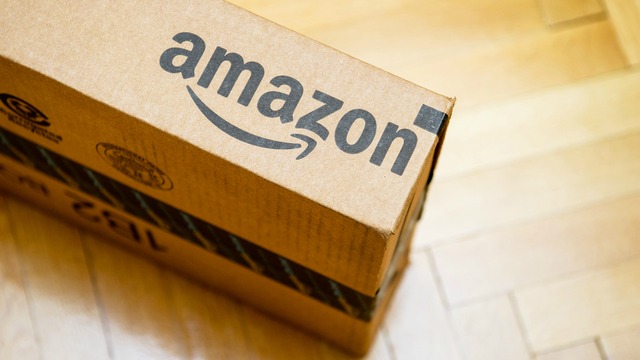Money-making in the USA: the secrets of an active fund’s outperformance
Baillie Gifford US Growth Trust’s Gary Robinson talks America’s exceptional growth stories, why Ama…
24th July 2020 11:06
by Tom Bailey from interactive investor
Baillie Gifford US Growth Trust’s Gary Robinson talks America’s exceptional growth stories, why Amazon is still a great investment opportunity, and the spread of disruption and innovation trends.

There is a popular view among investors that active fund management in the US market is a waste of time. The market is one of the most researched and watched in the world, so the price of stocks listed on major indices such as the S&P 500, Dow Jones or Nasdaq are so efficiently priced that active managers cannot add much value by sniffing out anomalies and mispricings, and are therefore not worth their fees. Much better, the argument goes, to gain your US market exposure with a cheap index fund or exchange traded fund (ETF) that simply tracks the market.
This view is supported by a lot of academic literature. Most active funds focused on the US market struggle to add returns, at least once fees are accounted for. There are, however, some notable exceptions – two examples being Baillie Gifford’s US Growth Trust and American fund.
Over the past two years (as of 22 June 2020), the S&P 500 index has given a sterling-denominated total return of 23.9%. In contrast, the Baillie Gifford US Growth Trust, itself launched only just over two years ago, has returned 70.9% and the open-ended Baillie Gifford American 65.9%.
These performances look even better when compared to their actively managed peers. Over the same period, the AIC’s North American sector returned just 12% on average for US-focused trusts, while the IA’s North American sector’s average return was 20.6% for open-ended funds.
Meanwhile, when looked at on a 10-year basis, Baillie Gifford American has returned 564.9%. In comparison, the IA North American sector averaged 241.7% and the S&P 500 294.6%. The Baillie Gifford US Growth Trust was only launched two years ago, so longer performance figures are not available.
Seeking the best companies
So, what explains this strong and consistent outperformance? Gary Robinson, who manages Baillie Gifford US Growth Trust and co-manages Baillie Gifford American fund, has strict criteria for the sort of companies he allows into his portfolios. He says: “We set a pretty high bar for inclusion. Our portfolios represent a tiny portion of the opportunity set.”
Robinson started his career at Baillie Gifford in 2003, straight out of university. Since 2012, he has focused on US equities; prior to that, he worked on teams covering Japanese and European small-cap stocks.
How does he decide which stocks to pick? Broadly, he says, “what we are looking for are exceptional growth companies in America”.
First, any company worthy of Robinson’s portfolios needs to have major growth opportunities. This means that the markets they serve, or are aiming to serve, are not just big but enormous. He gives the example of Amazon. First, it has a huge market in the form of global e-commerce, and second it has a huge market opportunity with its cloud computing service. Without a large market opportunity, Robinson explains, a company simply cannot grow at the rate necessary to provide the outsize returns that he is looking for.
However, simply having a potentially large market does not alone make a company successful. Therefore, Robinson looks for companies with ‘staying power’ in the form of a strong competitive advantage. He says when he and his team look at a company they try to determine if it has “a path to strong sustainable competitive advantage over time”.
Finally, he looks for companies with distinctive cultures. Chiefly, this means looking for those that are “genuinely run for the long term and are willing to forego short-term profits for long-term gain. They refuse to play the Wall Street game.” Such businesses, he says, are often run by their founders, who have a specific vision of what the company should be.

Finding needles in haystacks
According to Robinson, this approach to stock-picking is based on the understanding that historically only a few stocks have been responsible for the bulk of market returns.
He is referring to a phenomenon best documented by academic Hendrik Bessembinder in a 2017 study published in the Journal of Financial Economics. By looking at the performance of equities listed on US markets between 1926 and 2016, Bessembinder found that most stocks failed to provide performance above that of one-month US bonds. While the US market as a whole provided higher returns than one-month US bonds, with average annualised returns somewhere between 7% and 10% (depending on how you measure it), this was driven by just a few names. Robinson says it is his job to try and identify which companies will be those driving returns in the coming decades.
While this approach to stock-picking has served investors well over the past decade, it could be argued that the fund and the trust are both invested in very expensive parts of the market that may see lower returns in the future.
Robinson, however, does not agree. He says: “Looking back over the past 10 years, innovation and disruption was concentrated in a couple of big sectors like retail and e-commerce.” This innovation, however, is now spreading to other parts of the economy. “We are starting to see the same process take hold in finance, transport and other sectors. There is still a long way to go.”
He argues that as innovation and disruption continue, we will see the market further stratified between winners and losers. “The next decade will be a very fruitful environment for long-term growth investors,” he says.
Amazon, says Robinson, is still a great investment opportunity. The e-commerce giant is the largest holding in both the trust and fund. He argues: “It might sound odd to say, but it’s still early for Amazon. Sure, it’s already got a huge market capitalisation and a huge revenue base, but it’s still really exciting.” He points out that before the coronavirus pandemic, e-commerce was just 15% of US retail sales, suggesting there’s still much room for growth. On top of that, he says, the cloud computing opportunities for Amazon are huge: “Amazon Web Services could be one of the world’s most valuable companies on its own.”
Crucially, Amazon is restless in its search for new innovative opportunities. “There’s Amazon Prime video, grocery, ambient computing and Alexa voice control, among other things,” Robinson notes.
Pandemic speeds up innovation
When this interview with Robinson took place, the world was in lockdown due to the coronavirus pandemic. While many fund managers have seen their holdings’ share prices fall and their performance tank, Robinson’s portfolio was broadly well-positioned. The pandemic, he argues, will likely speed up the disruption and innovation trends we have already seen.
The most obvious examples are his e-commerce holdings. As well as Amazon, Robinson has a large holding in Shopify, another e-commerce company. The Canadian company is a platform designed to assist stores in setting up and running with the online sales side of their business. Companies facilitating e-commerce such as this have enabled consumers in lockdown to keep buying and businesses to keep selling. More broadly, consumers once hesitant to order online (particularly food) are now much more likely to do so. Shopify’s share price has grown by over 100% in 2020 (to mid-June).
With its focus on innovative and often tech and internet-oriented companies, Robinson’s portfolio is home to several other high-fliers, one example being Teladoc, the virtual healthcare company. He says that pre-pandemic, 95% of hospital appointments were in person. Due to the pandemic, Teladoc has seen its use spike by over 90%. “Most people [in the US] have access to telemedicine through insurance, but hardly anyone was using it. But now people are being forced to use it, and so far, satisfaction levels are high.”
Robinson says that this is a prime example of consumers being forced to change their habits in the face of the pandemic.
Another example of this is the move towards working from home. He says currently it is “unclear how it will all shape out”. But, he continues, “a lot of people are asking questions about why we still work in offices the way we did before the virus. This was all designed for the industrial revolution era where people had to come together, not for the information knowledge economy.”
But now companies such as Zoom, a video conferencing platform and one of his holdings, are making this no longer necessary. “We will go back to offices, but it will be different,” he says.
Interview and words by Tom Bailey
Gary Robinson in six
1. My best investments were...Abcam. I recommended it as a junior analyst on our UK smaller companies team.
2. My worst investment and lesson learned... there have been lots of bad investments but my worst decision was to not recommend we buy ASOS when I looked at it in 2006, the same year as Abcam. The cost of not owning that was far more painful than anything I recommended that went down.
3. My alternative career would have been...a pilot or a biochemist.
4. In my spare time, I like to... read books and play flight simulator games.
5. The one thing I would like to see change in financial services is... greater emphasis on longer time horizons.
6. Do you invest in the fund? Yes.
This article was originally published in our sister magazine Money Observer, which ceased publication in August 2020.
These articles are provided for information purposes only. Occasionally, an opinion about whether to buy or sell a specific investment may be provided by third parties. The content is not intended to be a personal recommendation to buy or sell any financial instrument or product, or to adopt any investment strategy as it is not provided based on an assessment of your investing knowledge and experience, your financial situation or your investment objectives. The value of your investments, and the income derived from them, may go down as well as up. You may not get back all the money that you invest. The investments referred to in this article may not be suitable for all investors, and if in doubt, an investor should seek advice from a qualified investment adviser.
Full performance can be found on the company or index summary page on the interactive investor website. Simply click on the company's or index name highlighted in the article.